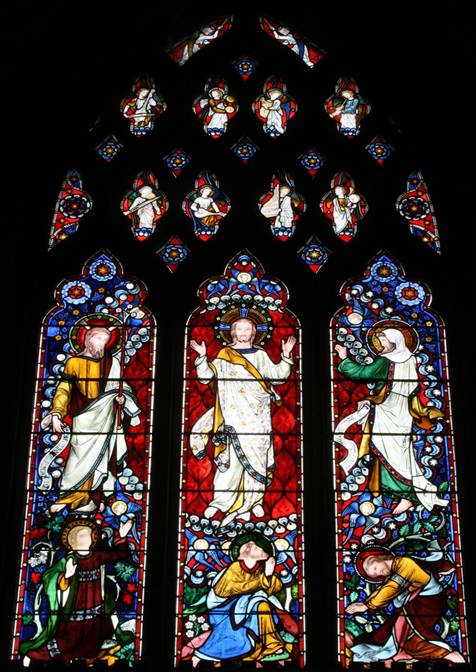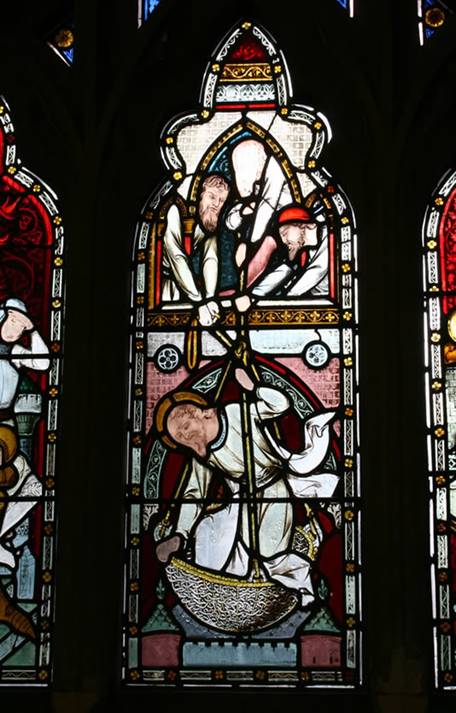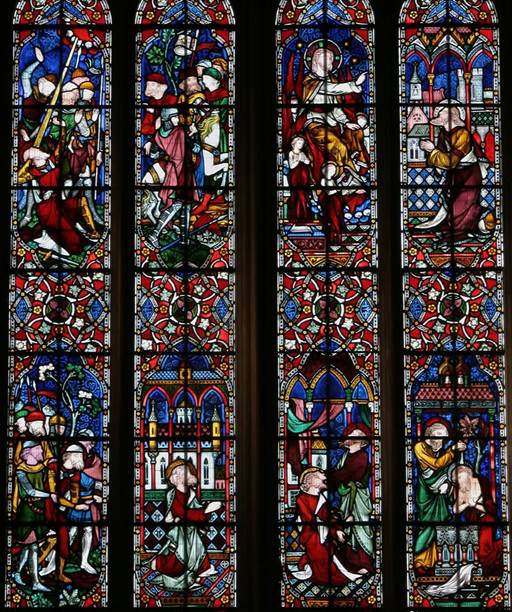Stained Glass Windows

There is a significant amount of stained glass in the church, not all of it immediately apparent. This brief introduction is offered as a ‘taster’ – – the reader is encouraged to visit, and to refer to the publications listed below, all of which give much more detail of each window.
As a visitor steps into the church, one of the first things to strike them is the great East Window. This huge work shows the Transfiguration of Christ. Jesus is central, flanked by Moses and Elijah, with John Peter and James at his feet as described in Luke 9:28 onwards.

Along either side of the church are 10 windows, of three panels each, describing various scenes from the life of St Paul. These windows do show signs of weathering in places – especially in some of the details. However, much of the detail in most of them is very well preserved. Each window is built in the same pattern of three panels with surmounting inserts. Here is one showing Paul’s escape from Damascus (Acts (:24)
Once inside the church, however, it is not long before the visitor becomes aware of the Great West window showing six scenes from St Paul’s conversion as described in Acts 9:1-19. This window has recently been restored (with much appreciated help from the Wokingham Society) and the colours of the glass are remarkably vibrant.
There are many other fine pieces around the church but we haven’t room to deal with them here. Please do refer to the texts below.

History
Most of the glass was commissioned and installed when the church was built, in 1863. The second big window in the West end, next to the Great West Window, was installed in 1874. They were all designed and manufactured by Hardman of Birmingham.
There were two significant movements which were active at this time, and which had a strong bearing on the design of the windows.
The first was the Arts and Crafts movement, spearheaded by William Morris – and there are many examples of this style to be found in the details of the glass.
The second was the Oxford movement, a group of High Church Anglicans who opposed what they saw as the secularisation of the church. They sought to re-inject some of the colour back into services, which they felt had become too plain under Protestantism. One aspect of this was the use of Gothic or medieval imagery, which can be seen in many of our windows.
Publications
- St Paul ’s Church – a Guide for Visitors. Leaflet available in the church
- St Paul ’s Church Wokingham – 125 th Anniversary. Booklet held in the archive
- St Paul ’s Parish Church – Jim Bell. Booklet available from the Town Information centre.
In addition, there is a very detailed description, with colour photographs. This is available on a CD from colin.weedon@btinternet.com
Alternatitively you can download a copy from
